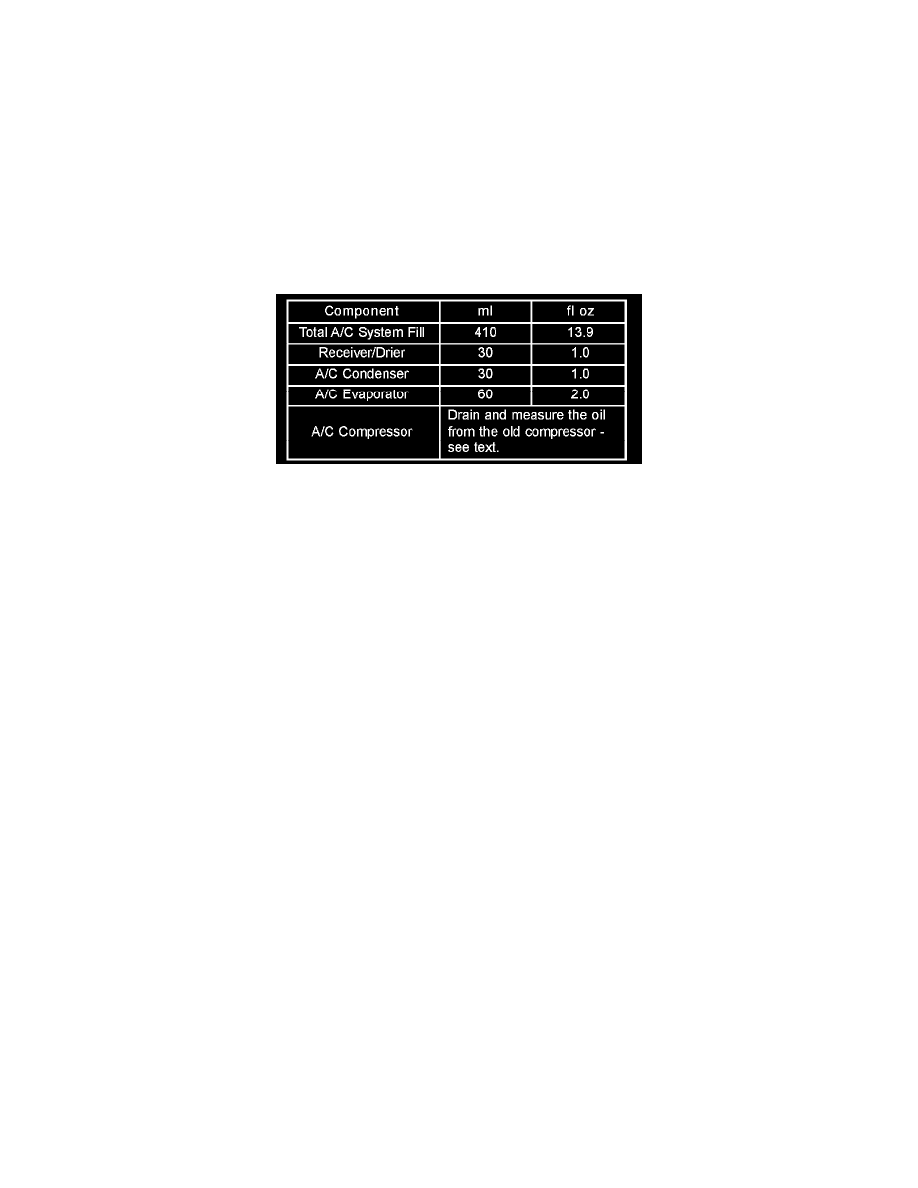Sprinter 3500 L5-2.7L DSL Turbo (2004)

Refrigerant Oil: Testing and Inspection
REFRIGERANT OIL LEVEL
When an A/C system is assembled at the factory, all components except the compressor are refrigerant oil free. After the refrigerant system has been
charged and operated, the refrigerant oil in the compressor is dispersed throughout the refrigerant system. The receiver-drier, evaporator, condenser, and
compressor will each retain a significant amount of the needed refrigerant oil.
It is important to have the correct amount of oil in the refrigerant system. This ensures proper lubrication of the A/C compressor. Too little oil will result
in damage to the A/C compressor. Too much oil will reduce the cooling capacity of the A/C system.
It will not be necessary to check the oil level in the A/C compressor or to add oil, unless there has been an oil loss. An oil loss may occur due to a rupture
or leak from a refrigerant line, a connector fitting, a component, or a component seal. If a leak occurs, add 30 milliliters (1 fluid ounce) of refrigerant oil
to the refrigerant system after the repair has been made. Refrigerant oil loss will be evident at the leak point by the presence of a wet, shiny surface
around the leak.
Refrigerant Oil Capacities
Refrigerant oil must be added when a receiver/drier, A/C evaporator, or A/C condenser are replaced. See the Refrigerant Oil Capacities chart. When an
A/C compressor is replaced, the refrigerant oil must be drained from the old compressor and measured. Drain all of the refrigerant oil from the new
compressor, then fill the new compressor with the same amount of refrigerant oil that was drained out of the old compressor.
